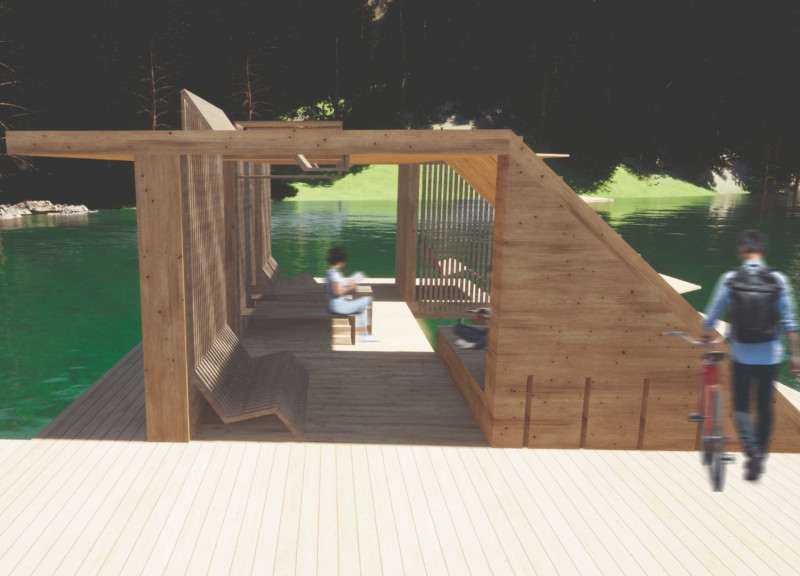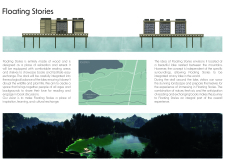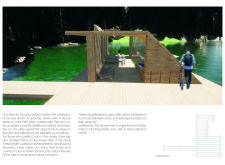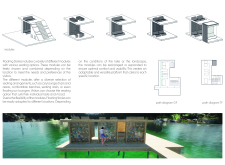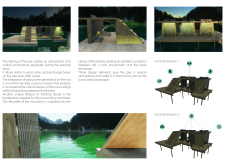5 key facts about this project
### Project Overview
Floating Stories is conceptualized as a tranquil retreat situated on Alatsee, a scenic lake in the Bavarian Alps. The project aims to foster community engagement through the appreciation of literature and cultural exchange, creating a space where visitors of all ages can gather to read, converse, and immerse themselves in the natural surroundings. The design prioritizes ecological sustainability while allowing for adaptability to various lake environments across the globe.
### Location and Environmental Integration
The structure is designed with an emphasis on minimizing its ecological footprint and harmonizing with the local ecosystem. By considering the balance between the facility and surrounding wildlife, the project reflects a commitment to sustainable architectural practices. Features such as strategic placement and environmental engagement are intended to enhance visitor experiences while preserving the area’s natural heritage.
### Material Context
Wood is the primary material employed in Floating Stories, chosen for its warmth and natural resonance. The structure incorporates thermally modified wood for durability, reinforced glass for bookshelves that mimic the mountain silhouettes, and solar panels integrated into the roof for energy efficiency. This careful selection of materials aligns with the overall vision of sustainability and environmental respect.
### Design Components
The project includes a floating dock that serves as a versatile platform for access and leisure, designed with minimal disruption to the lake ecosystem. Flexible seating arrangements cater to diverse visitor needs, while amenities such as bike racks promote sustainable transportation. The design alternates shaded areas with sunlit spots, catering to varying preferences and climatic conditions. Enhanced evening lighting further supports accessibility and enjoyment of the space after dark.
### Unique Features
A distinctive element of Floating Stories is the book exchange mechanism, featured through mountainous-inspired bookshelves. This integration not only enhances the visual appeal but fosters a sense of connection between literature and nature. Additionally, the modular design allows for adaptability in seating configurations and functionalities, promoting scalability and the potential for transportability to different locations.


